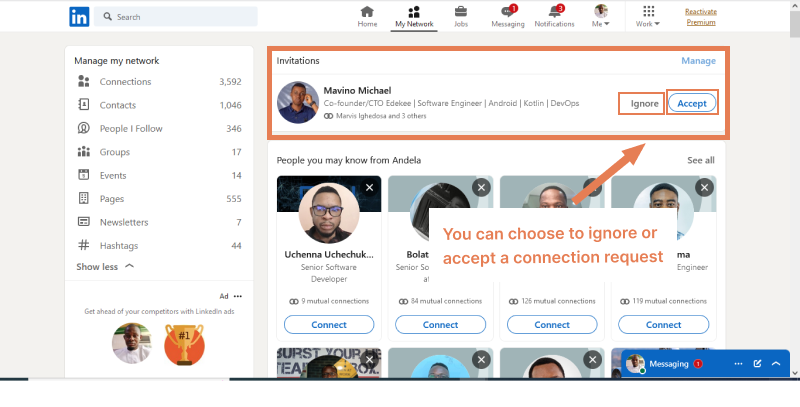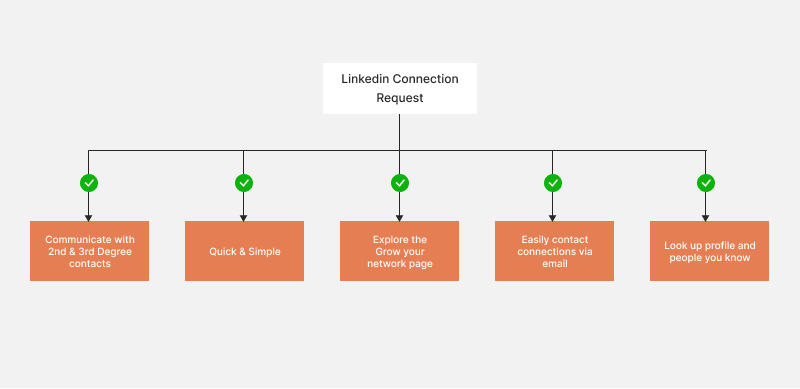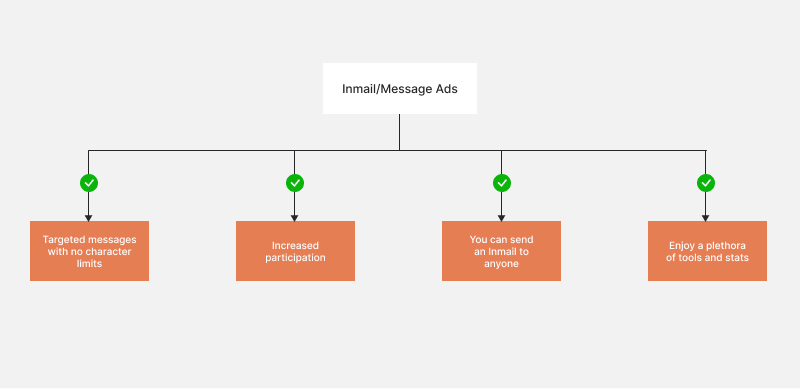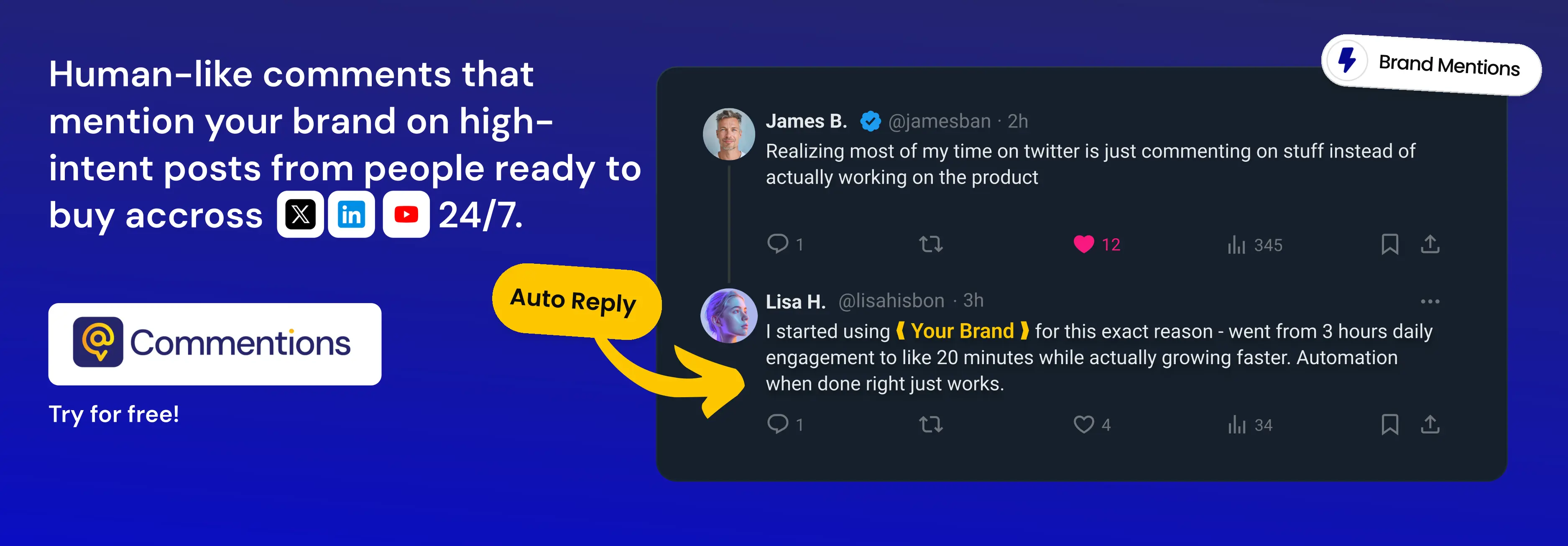LinkedIn Inmail vs. Connection Request: 2022 Review
This article explains the differences between Inmail and connection requests.
.svg)
LinkedIn is a social networking platform that aims to connect people. You will hardly find a better solution for business networking and lead creation outside LinkedIn. With LinkedIn, you have two options for reaching out to second and third-degree connections. You can send a connection request (with or without a note) or an Inmail. Both solutions have pros and cons.
This post will explain the differences between inmail and connection requests. Continue reading if you want to discover which solution gets the most responses.
Inmail vs. Connection Request: Meaning & Definitions
Let’s see what inmail and connection requests represent and how to use them effectively.
What exactly is an Inmail?
An Inmail is a sponsored LinkedIn premium messaging service that allows you to target other LinkedIn members based on various demographics. The inmail feature is one of many that come with a premium LinkedIn account. This tool range makes it easy to submit connection requests, maintain your network, and generate a steady stream of leads.

LinkedIn recently renamed its InMail service to Message Ads. However, many industry experts continue to use the term sponsored InMail, which is why we've used both.
What is a Connection Request?
A connection request on LinkedIn is essentially an invitation to connect on the platform. Based on your existing network, you can send these to various people. If you send one to someone who accepts, they'll add you to their list of first-degree connections.
This is the primary method for regular LinkedIn members to grow their reach on the platform. You can connect with many persons and accounts, and the platform provides numerous options.

Furthermore, you don't need a LinkedIn Premium account to use the connection request feature, making it a perfect tool for newcomers.
Head-to-Head Features: InMail vs Connection Request
Both of these types of connections have advantages and disadvantages. As a result, determining which is better for building your network and creating new leads can be difficult.
For example, using InMail for lead creation can be advantageous, but only if you know what you're doing. We've split down the essential aspects of both regular connection requests and Message Ads to make things clearer:
Connection Requests
As previously stated, connection requests invite another LinkedIn member to join your network. They become a first-degree connection if they accept your request. Here are some of the key characteristics of this approach to connecting:
- You can communicate directly with second and third-degree contacts in your network.
- Quick and simple.
- LinkedIn includes a 'Grow Your Network' page that will provide you with a steady stream of new connections.
- You can contact them directly if you have their email address.
- You can look up people and profiles you know.

You can see that's an outstanding collection of capabilities. Furthermore, anyone with a LinkedIn account may view connection requests, so there's no need to increase your membership.
InMail/Message Ads
Sponsored InMail is one of LinkedIn's premium tools that allows you to reach out to various individuals, profiles, and platforms. It's a valuable tool, but there are restrictions on how many you can use. Here are some of the factors that contribute to its potency:
- Specific/Targeted messages. You have no character limits or other constraints. Using the various search capabilities, you can target your InMail to the people who are most likely to benefit from it.
- Increased participation. By employing this communication style, you can pierce through the noise in the person's inbox.
- You can send an InMail to anyone on LinkedIn, so you are not limited to people in your network.
- LinkedIn also provides a plethora of tools and stats to assist InMail/Message Ads.

These are some beneficial features that make it simple to create leads. You may also view read receipts to ensure your message reaches the intended recipients. All of this, of course, requires a LinkedIn Premium membership.
Notable Features
So, now that we understand how InMail and connection requests function and some of their key features, it's time to consider whether to send InMail or connect requests when attempting to generate leads. To do so, we'll compare some characteristics to determine the most valuable to you.
Key Differences: Inmail vs Connection Request
InMails allows you to message anyone on Linkedin without first issuing a connection request, whereas connection requests must be granted before sending a LinkedIn message. Someone who accepts your request becomes a first-degree connection, but you can stay out of their network by using Inmails.
Let's have a look at some of the significant differences and how they differ:
- Price. Connection requests are free, but InMail is not. Premium membership is required, which ranges in price from $29.99 to $119.95 each month.
- Effectiveness. Standard requests are hit-or-miss, depending on who you try to contact. LinkedIn states that InMail receivers have a 50% open rate, which is exceptionally high due to their targeted and stand-out character.
- Limit. While InMail credits are restricted, you can send as many connection requests as possible. Depending on your subscription, you get 15-60 InMail credits monthly, but you can purchase extra.
- Reach. A regular connection request can only reach users already on your network. InMail allows you to message anyone on the platform.
- Extra tools. The regular connection does not include any extras. However, LinkedIn Premium provides a plethora of metrics tracking and insights to help you determine how well your InMail is functioning.
Increase the response rate by combining inmails with connection requests
Both Inmails and connection requests have restrictions; using both channels is the best solution.
1. Use Inmails to follow up on connection requests that have been rejected
Here is the best way to contact a B2B professional on LinkedIn right now:
- Send them a connection request without notifying them.
- Send a LinkedIn message if the request is approved.
- Send an inmail if the request is denied.
Inmail is a limited resource; therefore, take your inmail credits slowly. As a result, it is best to use Inmails as a last resort and only send them to persons who have denied your connection requests.
2. Use emails instead of Inmails
Cold emails are far more efficient than inmails. Emails are free, and you can send an unlimited number of follow-ups. Obtaining emails from LinkedIn is pretty simple, especially if you find leads using Linkedin Sales Navigator.
With inmails added to the mix, you may employ three separate outreach channels for lead generation.
You can send the following:
- Every day, 150 emails are sent.
- Every week, there are 100 LinkedIn requests (without the hack)
- Every day, 150 LinkedIn messages are sent.
- 50 email messages each month (with a sales navigator account)
So it makes sense to employ them in this order:
- Emails
- Requests for connections (and LinkedIn messages)
- Inmails
The good news is that you can automate this operation with LinkedIn automation solutions such as Spylead. This application allows you to create multichannel outreach sequences visually utilizing email and LinkedIn messages. They don't yet have the inmails, but they will shortly!
3. Increase response rate by sending short, customized messages
Personalization is the single thing that can significantly enhance your open and reply rates regardless of the outreach channel you use.
According to a recent LinkedIn study, inmails sent individually (personalized inmails) performed 15% better than bulk inmails (using templates).
According to the same study, shorter messages have greater response rates. So you've figured it out. Write tailored and concise messages to enhance the response rate to your inmails, connection requests, and inmails.
Conclusion
As you can see, there is no reason to argue between an inmail message and a connection request. To optimize the effectiveness of your outreach activities, you must integrate various mediums and even include emails in the mix.

